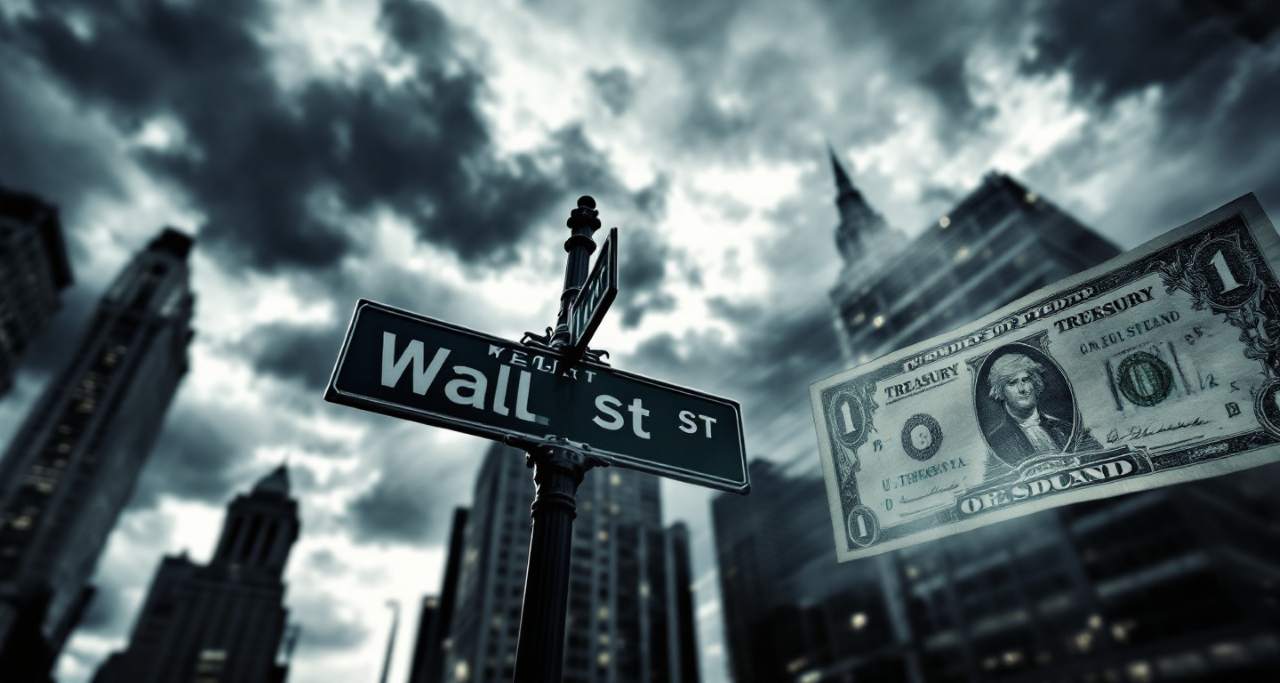
The Bond Market’s Red Alert: Why Wall Street Is Suddenly Nervous
The Yield Curve’s Ominous Message
If you’ve been watching the financial news ticker lately, you might have noticed a subtle but persistent drumbeat of anxiety coming from Wall Street. The source? Not stocks, not crypto, but the usually staid and sober U.S. Treasury bond market. This week, the 10-year Treasury yield surged to 4.61%—a level that, to the uninitiated, might seem like just another number. But to seasoned economists and market strategists, it’s a blaring siren.
Torsten Sløk, chief economist at Apollo Global Management, put it bluntly in a recent CNBC interview: the bond market is flashing signals that the U.S. could be heading straight into the jaws of stagflation—a rare and stubborn mix of high inflation and sluggish growth that haunted the 1970s. “By definition, tariffs mean higher inflation, and it means lower growth,” Sløk said, pointing to the inflationary impact of President Trump’s new tariffs and the ballooning U.S. budget deficit. The 2-year Treasury yield, meanwhile, has dropped to 3.96%, suggesting investors expect economic weakness in the near term, possibly forcing the Federal Reserve to cut rates even as inflation lingers.
Stagflation: The Ghost of Economies Past
Stagflation isn’t just a scary word economists throw around to get attention. It’s a policy nightmare. In a typical recession, the Fed can cut rates to juice growth. But when inflation is high, those same rate cuts risk making things worse. Naomi Fink, chief global strategist at Nikko Asset Management, notes that the current yield range on the 10-year Treasury is exactly where you’d expect if the market were bracing for a recession laced with persistent inflation.
I remember talking to a veteran bond trader during the last big inflation scare. He told me, “When the bond market gets spooked, it’s never about what’s happening today—it’s about what’s coming next.” That’s the vibe on Wall Street right now: a sense that the real trouble is just over the horizon.
The Tariff Effect and the Deficit Dilemma
What’s driving this sudden pessimism? Two words: tariffs and deficits. The new round of tariffs is expected to push up prices on everything from electronics to everyday goods, just as the federal government’s deficit spending is reaching historic highs. Jamie Dimon, CEO of JPMorgan, recently warned that global fiscal deficits, remilitarization, and trade restructuring are all inflationary forces. Nobel laureate Paul Krugman, never one to mince words, predicted on TV that tariff-driven price hikes could hit “within weeks,” likely accompanied by an economic slowdown. “It’s stagflation. Maybe it’s stagflation-lite, but we’re definitely heading for some kind of stagflation,” Krugman said.
Market Jitters and Policy Paralysis
The bond market’s moves aren’t just academic. They’re already rippling through the broader economy. Consensus forecasts for U.S. growth are slipping, while inflation expectations are ticking up. For policymakers, this is a lose-lose scenario. Cut rates, and you risk fueling inflation. Raise them, and you choke off what little growth remains. As Douglas Holtz-Eakin, a former CBO director, recently observed, “The persistence of core inflation, coupled with the bond market’s behavior, presents a challenging scenario for policymakers. Regardless of the underlying cause, this development is undoubtedly bad news for the economy”.
A Canary in the Coal Mine
It’s tempting to dismiss bond market warnings as the usual Wall Street hand-wringing. But history suggests otherwise. When the bond market gets nervous, it’s often the first sign that something deeper is amiss. In April, a sudden spike in Treasury yields nearly triggered a full-blown financial crisis, as both risky and supposedly safe assets tumbled in tandem.
As someone who’s watched more than a few market cycles, I can say this: when the bond market starts sending mixed signals—rising long-term yields, falling short-term yields, and persistent inflation—it’s time to pay attention. The canary in the coal mine is singing, and Wall Street, for once, is listening.
